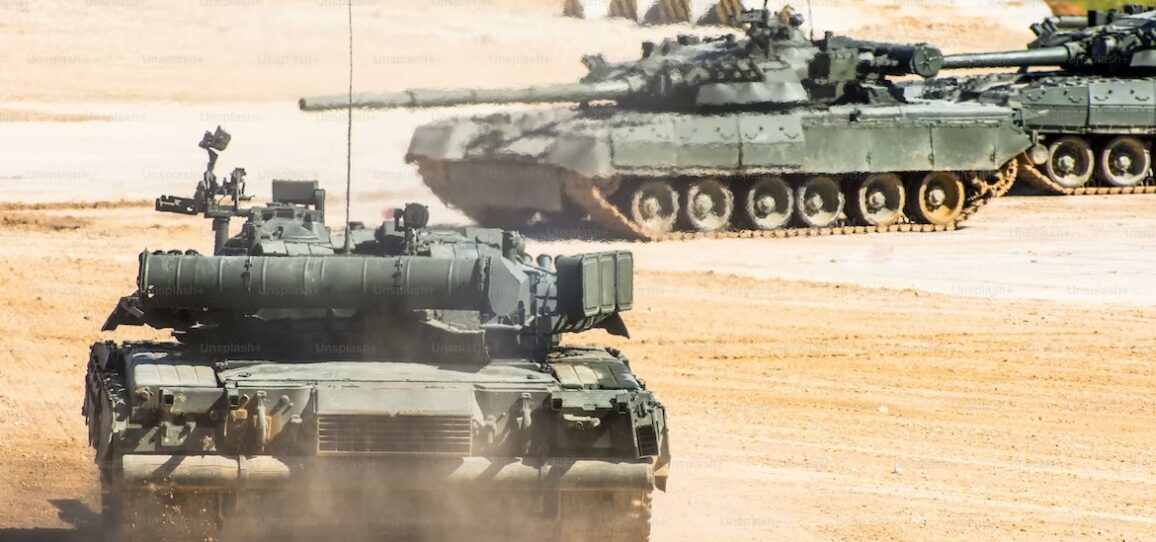
Anashim-Righteous Men
After the Midianite leadership corrupted many of the Jewish men, causing a major plague that killed 24,000 Jews, G-d commanded Moses to wage war against the Midianites.
Moses spoke to the people, saying: “Arm men from among yourselves for the legion that they may be against Midian to inflict G-d’s vengeance against Midian.”
Rashi comments on the word “anashim-men” and says that it refers to tzadikim-righteous men, The same expression, anashim-men, was used when Moses told Joshua to wage war against Amalek and it is interpreted by Rashi here to mean righteous men.
Tzadikim: A Generic Term
Rashi’s comment here is problematic when compared with his own commentary on the verse concerning the war against Amalek. There, Rashi states that it refers to “strong” men and those “who fear sin, so that their merit will assist them.” Why doesn’t Rashi state that it refers to tzadikim-righteous men as he does with respect to the war against Midian? And if we are to suggest that fear of sin is synonymous with righteousness, why doesn’t Rashi use the same expression for both?
To answer this question it may be suggested that tzadikim-righteous is a generic term, while fearing sin is but one aspect of righteousness. One can be righteous without the focus on fear of sin. For fighting the war against Midian, it sufficed that they were righteous without an emphasis on their fear of sin. However, for the war against Amalek, the specific aspect of righteousness involving fear of sin was necessary.
To explain:
Tzadikim and Yerei Cheit: The Difference
Nachmanides asserts that the reason for the selection of tzadikim to fight the Midianites was to exclude those who had succumbed previously to the seduction of the daughters of Moab. The instigators of that very crime would certainly not be qualified to wage war against the Midianites. To win a battle against evil, the soldiers cannot be compromised by that evil.
However, when fighting Amalek, the emphasis was on the aspect of righteousness that involved fear of sin. Amalek’s attack was a consequence of the people’s doubts about G-d’s presence in their midst. To remedy that lapse of faith required people who were yerei cheit, usually translated as “fearful of sin,” but more accurately a person who is afraid of deficiencies.
What do we mean by deficiencies?
One approach is to translate “deficiencies” as referring to those who do not see G-d’s presence in their lives because they were touched by the evil of Amalek denying G-d’s presence. And the ones commissioned to remedy that deficiency must be those who did not take such deficiencies lightly; they fear even the notion that G-d’s presence could be obscured. Thus, yerei cheit can be reinterpreted to mean “one who cannot tolerate the absence of G-d in this world.
We can find this attitude of intolerance at the heart of our cry “ad masai-how much longer?” How much longer must we live in a world where G-d’s presence is concealed?
The Two Wars
Returning to the war against Midian:
The war against Midian was a war to preserve the integrity of the Jewish people. The word Midian is related to a word that means discord. Midian attempted to sow discord and division among the Jewish people. To counter that threat we needed tzadikim, people whose lives revolved around doing righteous things, particularly the Mitzvah of tzedakah. The word tzadik is cognate to the word tzedakah.
Maimonides describes Moshiach as a Jewish leader who, among other things, will “fight the wars of G-d and be victorious.”
To which wars was Maimonides referring?
One war is the war against Amalek, the victory in which war is a prerequisite to rebuilding the Bais Hamikdash-Holy Temple. This is based on the teaching of the Talmud that when the Jewish people entered the Land of Israel they were given three interconnected commandments: The first was to appoint a king; the second was to wipe out the genocidal nation of Amalek; and, the third was to build the Bais Hamikdash. Indeed, Kings Saul and David started the process of eliminating Amalek but did not complete the task. Therefore, the Bais Hamikdash did not last. But the third and Final Bais Hamikdash, to be built by Moshiach, will endure forever because the evil of Amalek – the final impediment – will be vanquished.
The connection between the elimination of Amalek and the building of the Bais Hamikdash is organic. The Bais Hamikdash is the place where there is no obstruction of G-d’s revealed presence. When we get rid of the apparent vacuum caused by Amalek, G-d’s presence can then be fully revealed in the Bais Hamikdash.
But, Moshiach will also fight another war against the destructive and discordant evil of Midian. Moshiach, through the assistance of Eliyahu HaNavi will bring peace and unity to the world, particularly by emphasizing the Mitzvah of Tzedakah.
According to Maimonides, Moshiach needs to establish himself as the Moshiach by performing two functions related to the two foregoing wars:
First, he has to build the Bais Hamikdash.
Second, he has to gather all the Jewish people and bring them to the Land of Israel. Only then, Maimonides rules, can this period be referred to as the “certain [state of] Moshiach.”
It may be suggested that to accomplish the building of the Bais Hamikdash, Moshiach must vanquish the evil of Amalek because it stands in the way of G-d’s revelation in the Bais Hamikdash. To attain the second objective, gathering all the Jews to the Land of Israel, Moshiach must vanquish the evil of Midian as it stands in the way of Jewish unity
In truth, in order to achieve both objectives, Moshiach must fight both wars. To build the Bais Hamikdash, there is the need for peace and unity. Maimonides prefaces his discussion of the laws of the Bais Hamikdash with the quote from Psalms: “Seek the peace of Jerusalem…” This suggests that before we can accomplish the building of the Bais Hamikdash we need to achieve peace. King Solomon was only able to build the Holy Temple because peace reigned in his day; there was peace with other nations as well as internal unity.
Similarly, as a prerequisite to the ingathering of all Jews to the Land of Israel, Moshiach must destroy Amalek, who represents the evil of unmitigated arrogance and ego, the primary cause of division between people.
While both wars must be won before the building of the Bais Hamikdash and ingathering of the exile can occur, the war against Amalek is primarily related to the Bais Hamikdash and the war against Midian is primarily connected to the ingathering of the exiles.
The Three Weeks
As we make our way through the Three Weeks, when we focus on measures to hasten the building of the Basi Hamikdash and the return of the exiles, we must renew our fight against the twin evils of Amalek and Midian.
The prophet Isaiah gave us the prescription for Redemption in the verse: “Zion will be redeemed with mishpat (translated as judgment or study of Torah) and its captives with tzedakah.”
Tzedakah is the antidote to the divisiveness of Midian. However, to get rid of Amalek’s creation of a Divine vacuum requires a paradigm shift. We must cease thinking in exile terms. This we accomplish by Torah study, particularly of the subjects of Moshiach, Redemption and the Bais Hamikdash.


